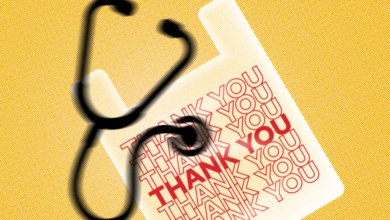Looking ahead to 2023: AI, machine learning, RTLS and robotic process automation


Workflow optimization, staff shortages and the patient experience are three areas that will benefit greatly in 2023 from artificial intelligence, machine learning, real-time location systems (RTLS) and robotic process automation (RPA), predicts Kenny Woods, senior vice president of sales and professional services at CenTrak, which offers locating, sensing and security technologies for the healthcare industry.
We spoke with this expert in the field to obtain his opinions on these areas of healthcare and exactly how these technologies will boost them in the year ahead.
Q. Workflow is a big topic in healthcare. What does workflow optimization in healthcare look like to you in 2023?
A. An efficient workflow platform is crucial in healthcare and ensures that daily operations run smoothly by providing ongoing visibility and actionable insights. Like any organization, healthcare facilities must analyze data to make decisions concerning facility performance, customer satisfaction, staffing and long-term planning.
Enterprise visibility is critical throughout this process. To achieve the best patient care and workflow optimization in 2023, healthcare professionals need access to platforms that automate workflows to alleviate the burden of manual documentation – which often can be delayed or potentially inaccurate – and offer proactive communications to each other, patients and family members.
Workflow platforms that leverage RTLS data can keep tabs on key patient flow metrics and ensure staff know where all patients are in their care journey.
It often can be time-consuming and impacted by human error when healthcare staff are left to juggle the needs of their patients and the administrative requirements of manual documentation. RTLS leverages IoT-enabled badges to automate data collection, providing accurate insights while enhancing the patient care experience.
In 2023, I expect more healthcare organizations will use these badges to collect data enterprise wide to gain comprehensive real-time insights on equipment utilization, clinical workflows, patient/staff interactions and safety compliance to reduce operational bottlenecks, increase efficiency and improve the patient experience.
Providing accurate, real-time information regarding case status, patient location and departmental work queues offers enhanced visibility as well as meaningful data for future analysis. I hope this will drive greater interest in the ability to leverage predictive and prescriptive results in the new year.
Patients and family members are informed with real-time status updates and text messages throughout the care process without the need for staff members to manually update the system or make phone calls to multiple family members.
Advanced workflow platforms automatically run in the background and produce a major impact by eliminating non-value-added tasks for caregivers and offering patients proactive status updates, estimated wait times, family text messaging to keep loved ones informed, and providing staff views on display boards that give an easy-to-read layout of each patient’s location, the time they’ve been at the facility, the time they’ve been waiting for a staff member or provider, and which staff member or provider is currently in their room or was most recently with them.
These platforms provide a holistic view of patient/staff interactions and movement throughout the facility, as well as daily to hourly averages of individual milestones to help identify anomalies or bottlenecks.
Real-time patient information, asset management and clear staff communications keep operations in any complex healthcare environment running smoothly with high efficiency – these features will be especially beneficial in the new year as healthcare teams continue to face staff shortages, supply challenges and workplace violence.
Q. What is your view of the staffing shortages in healthcare and how might various kinds of technologies help curb the problem in 2023?
A. Although the healthcare industry has remained resilient over the last two years, the COVID-19 pandemic has caused significant disruption. The pressure from those years has further amplified staff burnout and stressed the labor market, driving the turnover rate for registered nurses in 2021 to increase by 8%.
Meanwhile, the average cost of turnover for a registered nurse was $46,100 in 2021. These staffing shortages are continuing to impact the industry and forcing hospitals to limit the patients they are able to provide care for.
Staffing shortages are a primary concern and a significant force behind many recent RTLS implementations in healthcare facilities. Lessening nurses’ workloads, specifically around non-patient-oriented tasks, is a critical aspect of combating burnout and promoting staff retention. Healthcare leaders will find that investing in their staff during the coming year makes sense for staff satisfaction, retention and the facility’s bottom line.
According to The Joint Commission, reducing workplace burnout can improve patient care and decrease distress, job dissatisfaction, turnover and costs.
RTLS offerings such as automated nurse call systems can decrease response times to patient needs by 40% and help healthcare staff find fulfillment in their profession as they gain more time to focus on patient care. RTLS solutions provide healthcare staff more time for patient interaction by reducing manual documentation and workflow bottlenecks, while enhancing clear communication between staff.
Healthcare facilities using RTLS infrastructure for nurse call automation already are enabled with the staff badges and clinical-grade location necessary to also introduce a staff duress safety solution. Since the pandemic, we have seen the demand for staff safety solutions increase significantly. A recent survey found 48% of nurses have faced increased violence in the last year, and 32% are considering leaving their jobs due to the violence and stress. Putting this into perspective is important.
What if this were a financial institution, would they accept this statistic? Of course not. Providing peace of mind to staff members that they can request assistance to their exact location should they need it reiterates that they work in a safe environment where they are valued. Implementing safety solutions shows staff they are a priority and can help combat turnover.
We must address this problem immediately, or its impact will be immediate.
An automated asset tracking and management solution is another strong tool to reduce non-value-add tasks and provide peace of mind when it comes to critical equipment. One-third of nurses have reported spending an hour or more during an average shift hunting for necessary equipment.
RTLS provides accurate, real-time, room- and bay-level map views and lists locations of equipment, usage and alerts for maintenance and cleaning. Automated PAR levels provide insight into mobile medical equipment, allowing equipment distribution teams to make more informed purchasing and usage decisions and ensure staff has adequate supplies in the correct locations.
By implementing asset management in 2023, medical staff can locate critical equipment using IoT-enabled tags within seconds – saving precious time, reducing stress and ensuring patients receive timely care.
Q. AI and machine learning have made inroads into healthcare over the past decade. Where will they go in 2023?
A. As previously mentioned, the pandemic has caused significant disruption throughout the last two years. One result of this disruption has been the rapid acceleration of healthcare digitization due to the immediacy of care needs and patient preferences. Having successfully taken root in healthcare, RTLS have become a beneficiary of the acceleration and development of AI, machine learning and RPA.
The growth of analytics, automation and AI have enabled faster completion of internal healthcare processes and administration steps. We’re already seeing these changes develop on the clinical side, and I believe they will quickly progress on the operational side as well. By automating different processes in the future, clinicians will be able to spend more time being clinicians and less time on administrative tasks such as documentation.
The increasing use of these advancements is a win-win for patients, healthcare professionals and facility administrators as we move into 2023. For example, when patient location data generated from an RTLS can proactively notify staff of a patient’s arrival, staff can begin mixing certain medications or preparing certain tests or procedures.
This automation guarantees that each critical step is completed promptly instead of human error potentially creating delays in the care journey. In many situations, automated alerts and robust integrations, such as those with electronic health record platforms, can move the process along faster, while ensuring the patient receives prompt care and that the healthcare facility has the potential to increase its bottom line.
The continuous advancements in AI and machine learning through robotic processes and intelligent automation are enhancing the data insights provided by RTLS.
These platforms are a centralized base that deliver actionable intelligence at each step of a facility’s RTLS journey – providing early detection of deficiencies in the RTLS performance, key performance indicators, calculations on ROI, and insights from actionable dashboards, predictive modeling, proactive notifications and industry benchmarks.
The data insights help healthcare facilities better understand process optimization, which translates to greater efficiency and improved patient care in the coming year.
Q. Healthcare provider organizations have been working hard to improve the patient experience. What do you think will happen in this area in 2023?
A. Following the last few years, many health systems are pursuing digital transformations and enhanced technology to provide new value to patients and reduce stress. An important aspect of the patient experience is ensuring that patients and loved ones are comfortable and informed throughout the care journey.
To enhance the experience in 2023, I anticipate healthcare organizations will leverage real-time location technologies to provide stronger communication for patients and staff. Automated family text messaging as patients move throughout their phases of care and proactive patient communications for status details, wait times and directions enables healthcare facilities to provide peace of mind and ensure that both patients and loved ones are well-informed.
Reduced contact with loved ones can increase stress in patients who are likely already experiencing some anxiety over their health or the medical condition that brought them to the hospital in the first place. When loved ones have been admitted to the ICU during the COVID-19 pandemic, the necessary infection control rules in hospitals have increasingly led to family separation.
This form of separation often creates barriers in families fully understanding the complex medical needs of their loved ones and can exacerbate trauma-related reactions. Family text messaging can return some comfort as visitation restrictions remain ever-changing.
These messages provide valuable links to any loved ones separated from the patient while building trust among the patient, the medical staff who care for them, and their concerned family members. The family text messaging offering has become very popular in the facilities that have already implemented it.
If a loved one is admitted to the hospital and wishes to share updates with family, they simply input the appropriate phone numbers and the contact automatically receives updates on care status and clinical milestones – keeping families connected from anywhere.
As health systems look to provide greater comfort and enhance the patient experience, digital wayfinding can also reduce stressors for patients or any potential visitors. As organization decision-makers will likely still face great scrutiny around expenses in 2023, I expect facilities to have an even greater interest in the perks of digital wayfinding.
This is an RTLS offering with benefits for the patient, the staff and the health system’s bottom line. On a first visit to a new healthcare facility, it is estimated that about 30% of patients get lost. This challenge can lead to stressed patients and visitors, late arrivals, missed appointments, and ultimately delayed patient care.
Emory University in Atlanta estimates that patient wayfinding problems previously led directly to its facilities losing $200,000 per year. Due to missed appointments alone, hospitals nationwide collectively lose $150 billion each year.
An advanced digital wayfinding solution can prepare a route for a patient and send the link via text message directly to their mobile phone. Upon arrival, the user simply opens the route in a web browser, eliminating the need for a specific app download, and receives turn-by-turn directions from their parking spot.
The directions are provided on a private Google Maps-like interface, giving users a sense of familiarity and intuitive technology. Top digital wayfinding solutions can also utilize QR codes throughout the hospital campus. This no-hardware solution is cost-effective, scalable, and easy for patients and visitors to use.
I see this as a popular solution in the coming year and quickly becoming a standard in healthcare, especially with the rise of smart hospitals and ongoing interest in digital transformations.
Follow Bill’s HIT coverage on LinkedIn: Bill Siwicki
Email the writer: [email protected]
Healthcare IT News is a HIMSS Media publication.




